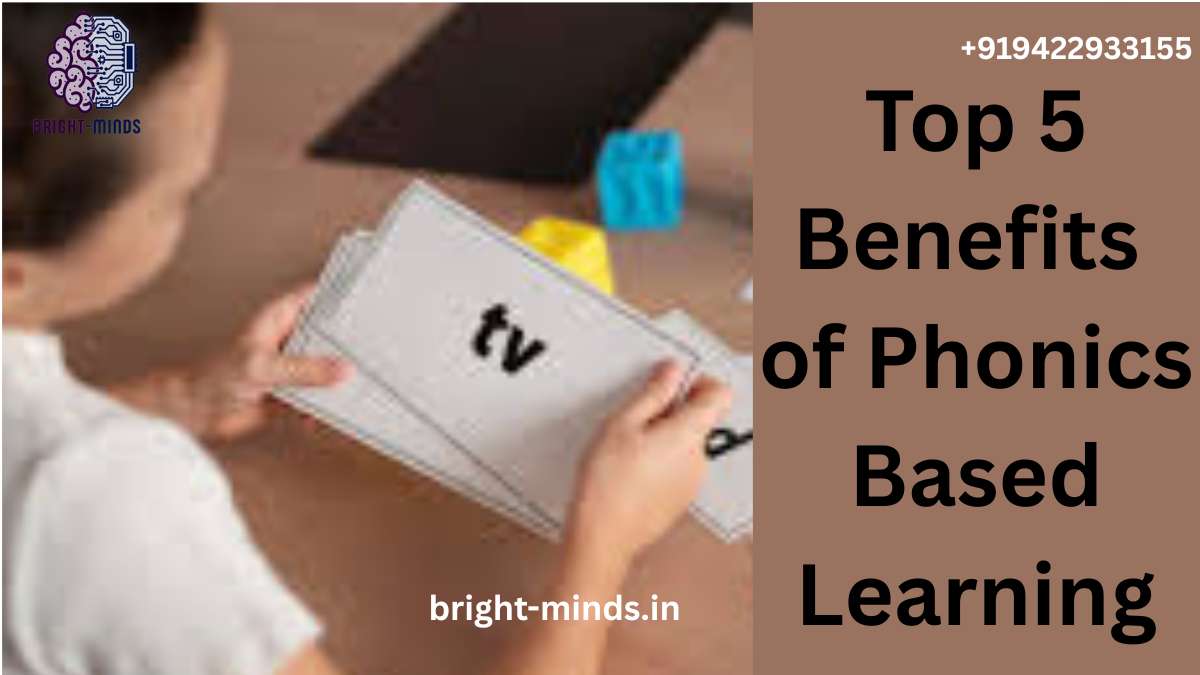“C-a-t… cat!” It may seem simple, but this moment when a child connects letters to sounds is one of the most powerful building blocks of literacy.
Welcome to the world of phonics-based learning, where children learn to read by connecting sounds (phonemes) to letters or groups of letters (graphemes). It’s a time-tested, research-backed approach that forms the core of early reading success.
Whether you’re a parent, teacher, or company employee interested in child education or even employee upskilling programs, understanding phonics can make a huge difference in how we support literacy at all stages of life.
And the best part? Phonics isn’t just for kids it’s a foundational skill that can help learners of any age build confidence, comprehension, and communication skills that last a lifetime.
🔤 What Is Phonics-Based Learning?
At its core, phonics teaches learners to decode written language by sounding out words. Instead of memorizing whole words, students learn sound-letter relationships, giving them the tools to decode any unfamiliar word.
This is especially important for early readers, non-native English speakers, or anyone looking to improve their literacy skills quickly and effectively.
📈 Why Phonics Is Making a Big Comeback
With the recent rise in evidence-based teaching and growing concerns over literacy gaps in schools, phonics-based programs are trending again — and for good reason.
Educational experts, brain researchers, and literacy advocates are uniting around a simple truth: Phonics works. That’s why many schools, ed-tech startups, and corporate learning initiatives are integrating phonics into their training programs.
Let’s explore the top 5 benefits of this powerful learning method.
✅ 1. Builds Strong Reading Foundations
Reading is like building a house. Phonics provides the bricks and mortar.
By learning how sounds connect to letters, children can:
- Sound out new words independently
- Recognize patterns in spelling
- Read fluently and with confidence
📚 Real-world tip: Reading becomes less about guessing and more about decoding — a key difference that boosts long-term literacy.
✅ 2. Boosts Spelling and Writing Skills
When learners understand how words are built, spelling comes naturally. Phonics teaches not only how to read words, but also how to spell them.
This builds stronger:
- Sentence construction
- Grammar usage
- Vocabulary development
✍️ Example: A child who knows “ph” sounds like “f” will spell “phone” correctly instead of “fone.”
✅ 3. Enhances Listening and Pronunciation
Phonics isn’t just visual — it trains the ears and mouth too.
Learners improve their:
- Pronunciation of tricky sounds
- Listening skills as they differentiate similar sounds (like “ch” vs “sh”)
- Phonemic awareness, which is key for early literacy
🎧 Corporate angle: Phonics-based tools are also used in accent training and communication development for adults in global workplaces.
✅ 4. Builds Reading Confidence and Independence
One of the biggest hurdles in learning is confidence.
Phonics empowers learners to:
- Tackle unfamiliar words
- Read aloud more fluently
- Enjoy reading for pleasure
📖 Parent tip: Children who master phonics are less likely to get frustrated and more likely to engage with books and learning on their own.
✅ 5. Prepares Learners for Lifelong Literacy Success
When students get a strong phonics foundation, they don’t just learn to read — they read to learn.
This helps them:
- Excel in all school subjects (math word problems, science texts, etc.)
- Develop better comprehension skills
- Communicate clearly in writing and speech
🎓 Lifelong value: Whether in the classroom or the boardroom, strong literacy skills open doors to personal and professional success.
💡 Market Trend Insight: Why Companies Are Taking Notice
With the rise in learning and development (L&D) programs, more companies are offering literacy support for employees and their families. Phonics-based tools are now used in:
- Early childhood education programs
- Adult learning platforms
- ESL (English as a Second Language) training courses
And as the workforce becomes increasingly global, investing in foundational skills like phonics is no longer optional — it’s a competitive advantage.
👩🏫 Real-Life Example: From Frustration to Fluency
Take Ava, a 6-year-old who struggled with reading. Her parents tried flashcards and memorization, but nothing stuck. Once they switched to a phonics-based app, Ava began to decode words, read with expression, and—most importantly—enjoy books again.
Now, she’s the first one to volunteer for story time at school.
This story isn’t rare. It’s what happens when learners are given the right tools — and the confidence to use them.
✨ Take the First Step Toward Literacy Success
Whether you’re supporting your own child, working in HR, or simply passionate about learning, phonics is a proven, practical way to build literacy from the ground up.
And it only takes a few minutes a day to make a lifelong impact.
👉 Ready to Unlock the Power of Phonics?
Explore our expert-designed phonics-based courses, digital tools, and family-friendly resources to support reading success at any age.

